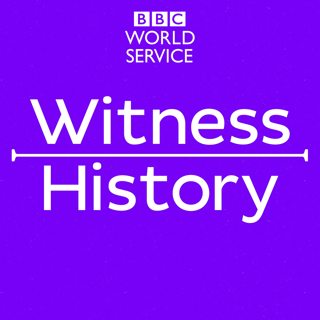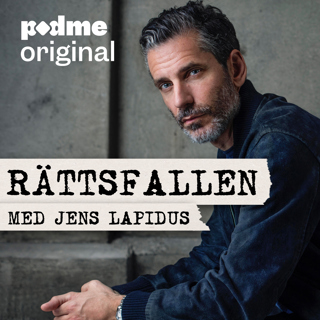
WW2: Prisoner on the High Seas
A surprise attack, a ship sunk, a crew captured - a veteran of the British Merchant Navy remembers his encounter with a German commerce raider in the South Atlantic in May 1940. At the time, Captain Graeme Cubbin was just a 16-year-old cadet on the British merchant ship, SS Scientist when it became the first victim of the German commerce raider, the Atlantis. The crew of the Scientist spent nine months as prisoners on the German raider, as it wreaked havoc on Allied shipping in the South Atlantic and the Indian Ocean. Capt. Cubbin spoke to Alex Last about his memories of the attack and the sacrifices made by the Merchant Navy in World War Two. Photo: The Atlantis, a German commerce raider, which operated in the South Atlantic and Indian Ocean for almost two years. (UK Govt)
3 Maj 20189min

Takeshi's Castle
The hugely popular game show started on Japanese TV in 1986. Contestants were faced with all sorts of physical challenges which often resulted in slapstick failure. It soon became an international success. Ashely Byrne has been speaking to Hayato Tani who played 'The General' in Takeshi's Castle.Photo: Hayato Tani now. Credit:Yoshie Matsumoto.
2 Maj 20189min

The Children's Crusade
Birmingham Alabama was one of the most segregated cities in the USA in 1963. In May that year thousands of black schoolchildren responded to a call from Martin Luther King to protest against segregation at the height of the civil rights movement. It became known as the Children's Crusade. Gwendolyn Webb was 14 years old at the time. In 2013 she spoke to Ashley Byrne about her experiences.Photo: African American children are attacked by dogs and water cannons during a protest against segregation in May 1963 in Birmingham, Alabama. (Credit: Michael Ochs Archives/Getty Images)
1 Maj 20188min

A New Approach to Shakespeare
The Royal Shakespeare Company opened in Britain in 1961 and changed theatre forever. 400 years after his death, the playwright's work began to be performed in a radical new way. Claire Bowes has been listening to archive of the founder of the theatre company, Sir Peter Hall, and speaking to Britain's longest serving theatre critic, Michael Billington about the move which made Shakespeare more relevant than ever before.Photo: Portrait of English dramatist William Shakespeare (1564 - 1616), circa 1600. Credit: Hulton Archive/Getty Images
30 Apr 201813min

Pablo Picasso
The man that many consider the greatest artist of the 20th century, Pablo Picasso, died in April 1973. Louise Hidalgo talks to Anthony Penrose who knew Picasso as a boy and whose parents, the American photographer, Lee Miller, and the surrealist artist, Roland Penrose, were his friends and biographer.Picture: Pablo Picasso by the photographer Lee Miller, taken in the Villa la Californie, Cannes, in 1956 (Credit: Lee Miller Archives)
27 Apr 20189min

Scottish Prison Experiment
A Glasgow jail began offering art therapy and a much more relaxed regime to some of its most violent prisoners in 1973. It was known as the Barlinnie 'special unit' and soon its inmates were painting and writing instead of fighting with prison officers. Hear archive voices from the unit alongside Professor Richard Sparks who was a visitor there in the 1990s.Photo: Barlinnie prison. Credit:PA /David Cheskin.
26 Apr 20188min

The Oslo Peace Talks
Top secret negotiations in Norway during 1993 eventually led to an Israeli-Palestinian agreement which became known as the Oslo Accord. Norwegian diplomat Mona Juul was one of the people who helped keep the talks on track. She spoke to Louise Hidalgo for Witness in 2012.(Photo: Yitzhak Rabin, Bill Clinton and Yasser Arafat at the signing ceremony for the Oslo Accord, September 13,1993. Credit: AFP/Getty Images.)
25 Apr 20188min

Swimming The Bering Strait
In 1987, an American endurance swimmer called Lynne Cox swam across the "Ice Curtain" between the USA and the Soviet Union. The Diomede Islands in the Bering Strait are only 2.7 miles apart, but divided by near-freezing water and Cold War rivalry. Lynne Cox spoke to Simon Watts about her swim in 2012. This programme is a rebroadcast. PHOTO: Lynne Cox on the Bering Strait. (Copyright Rich Roberts)
24 Apr 20188min






















